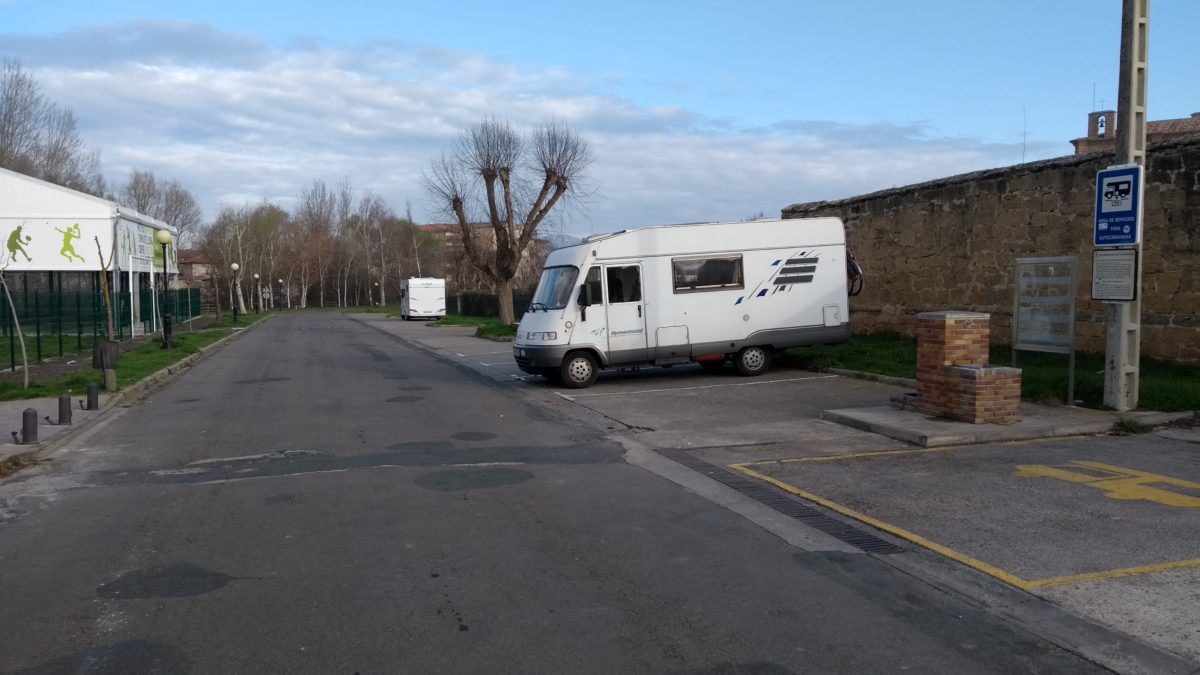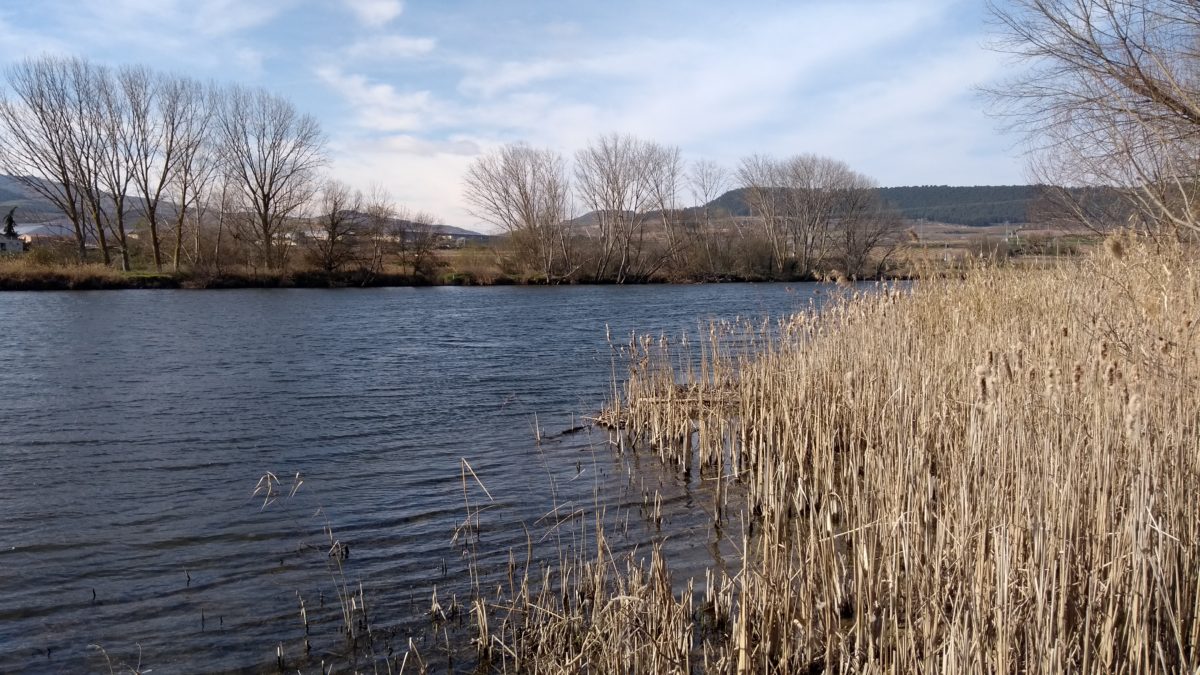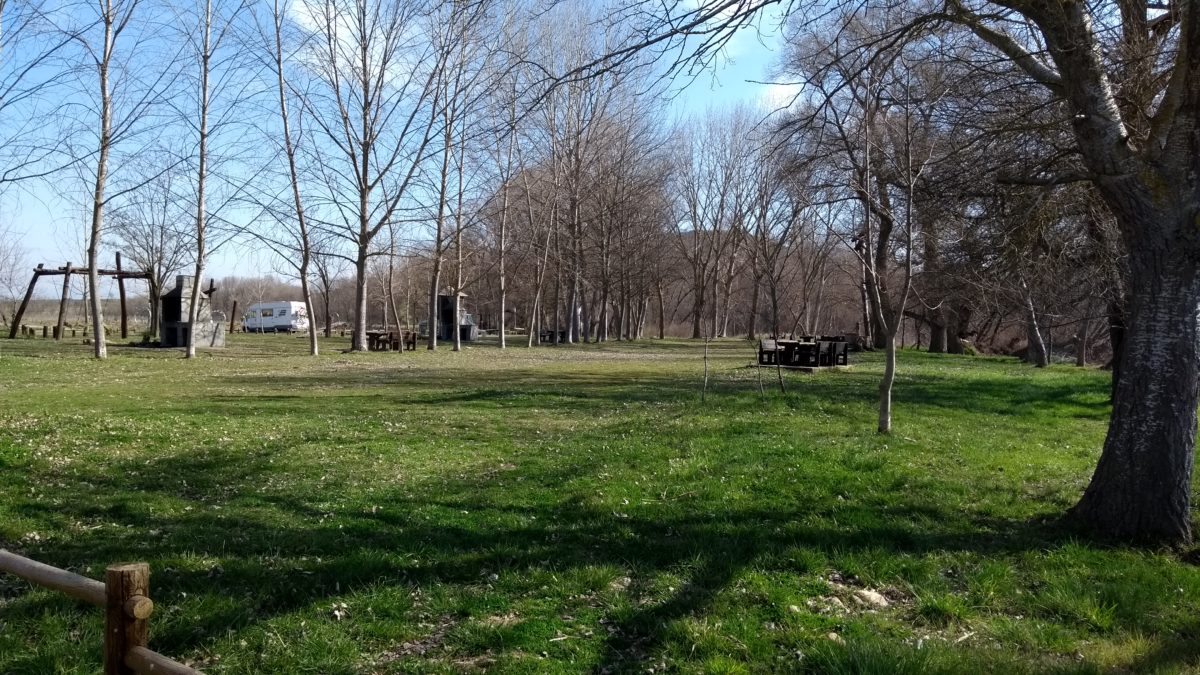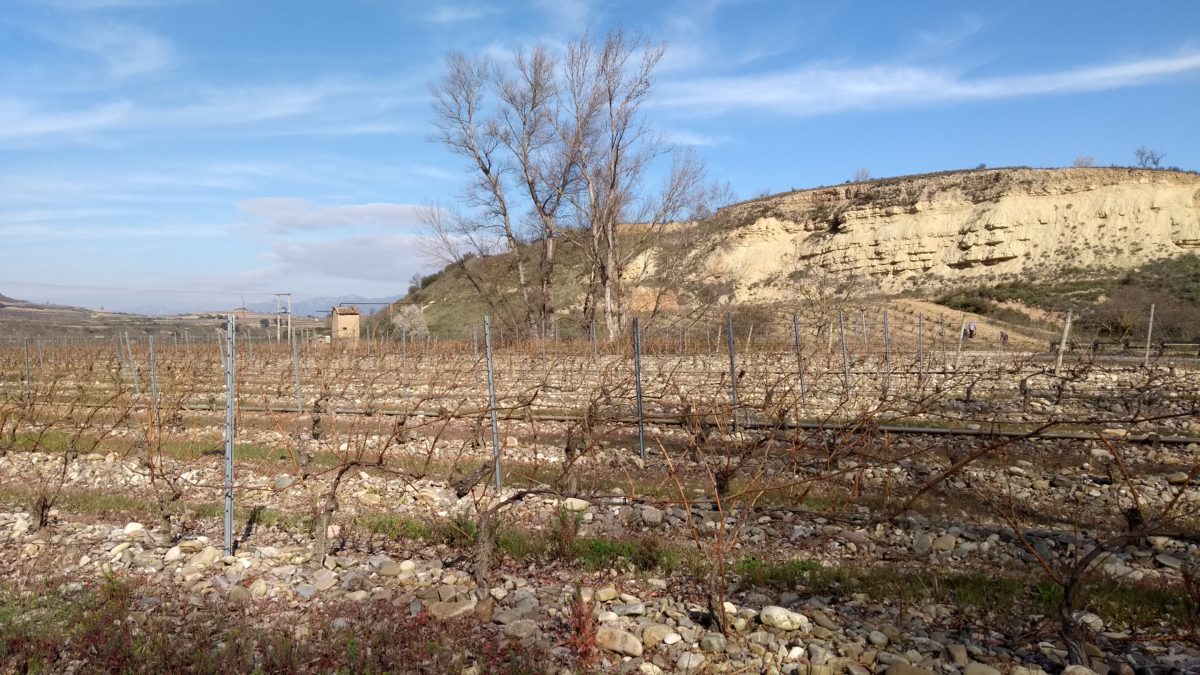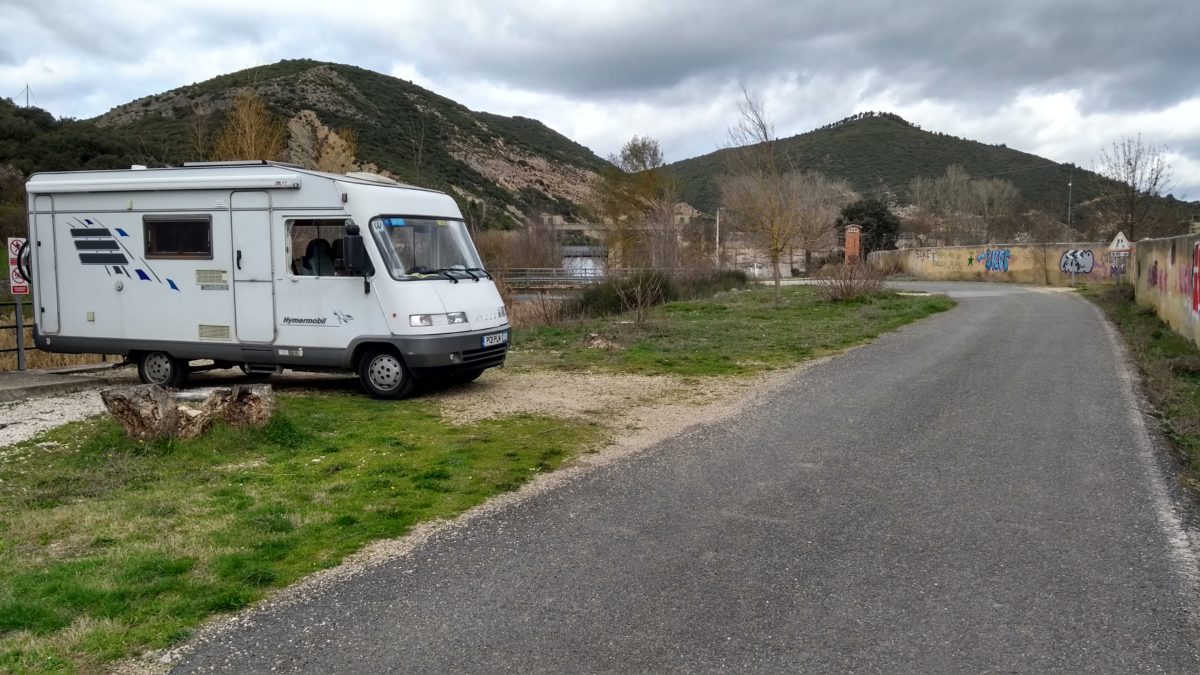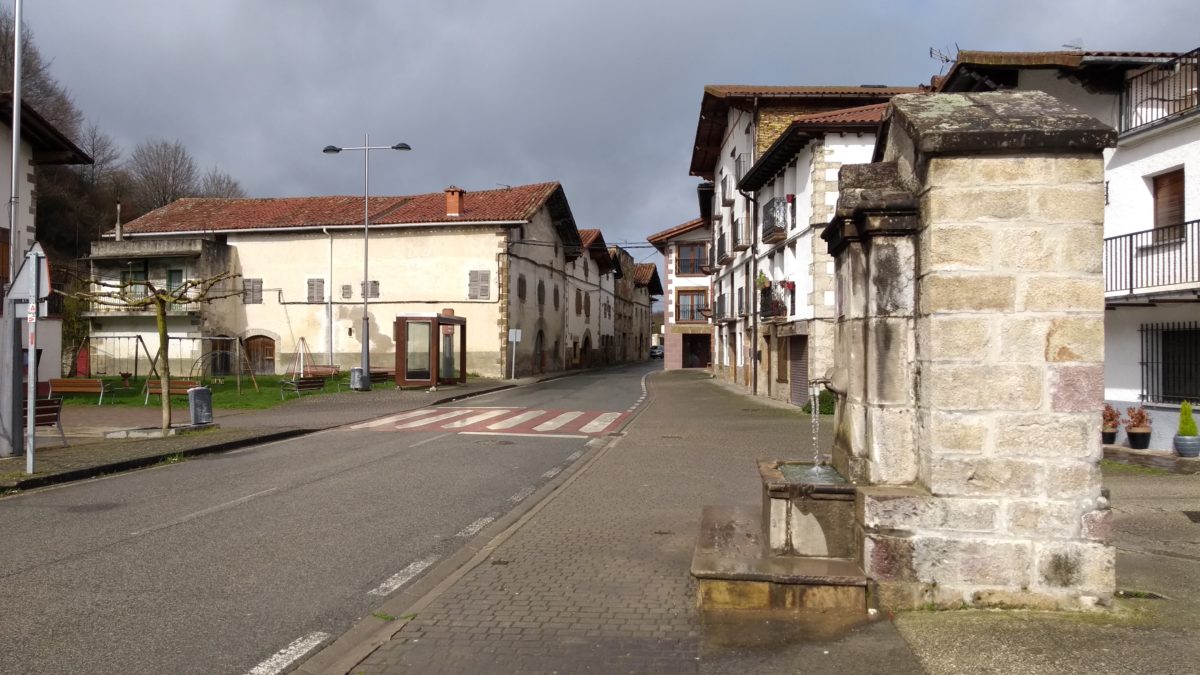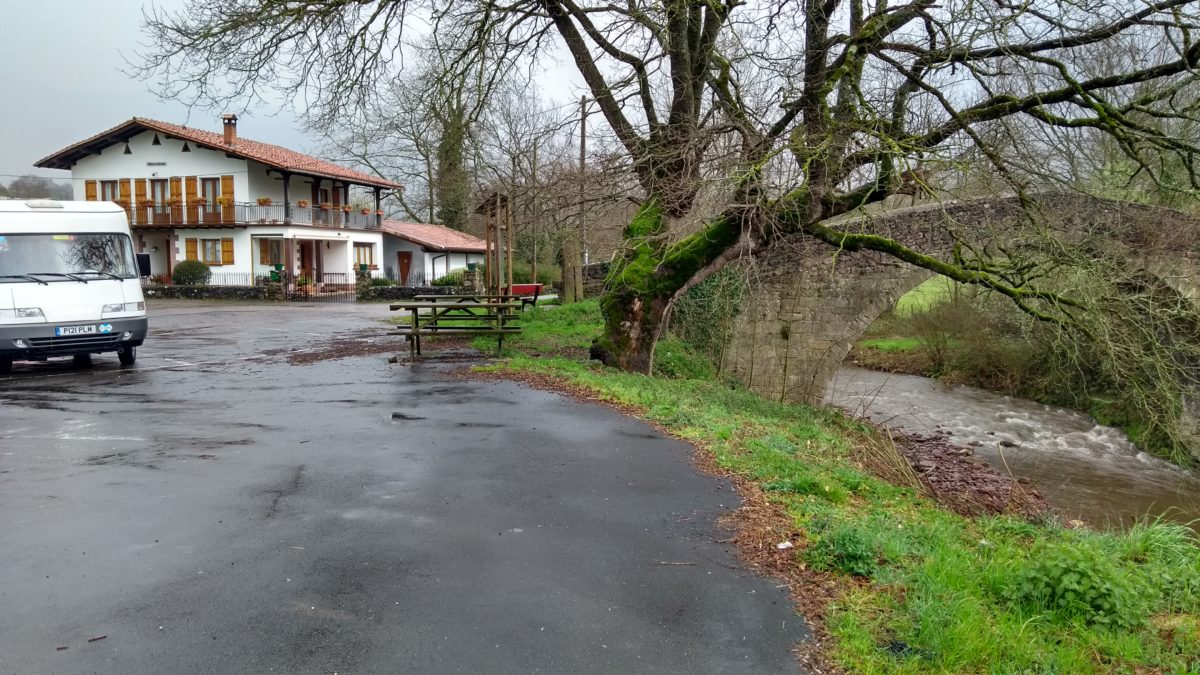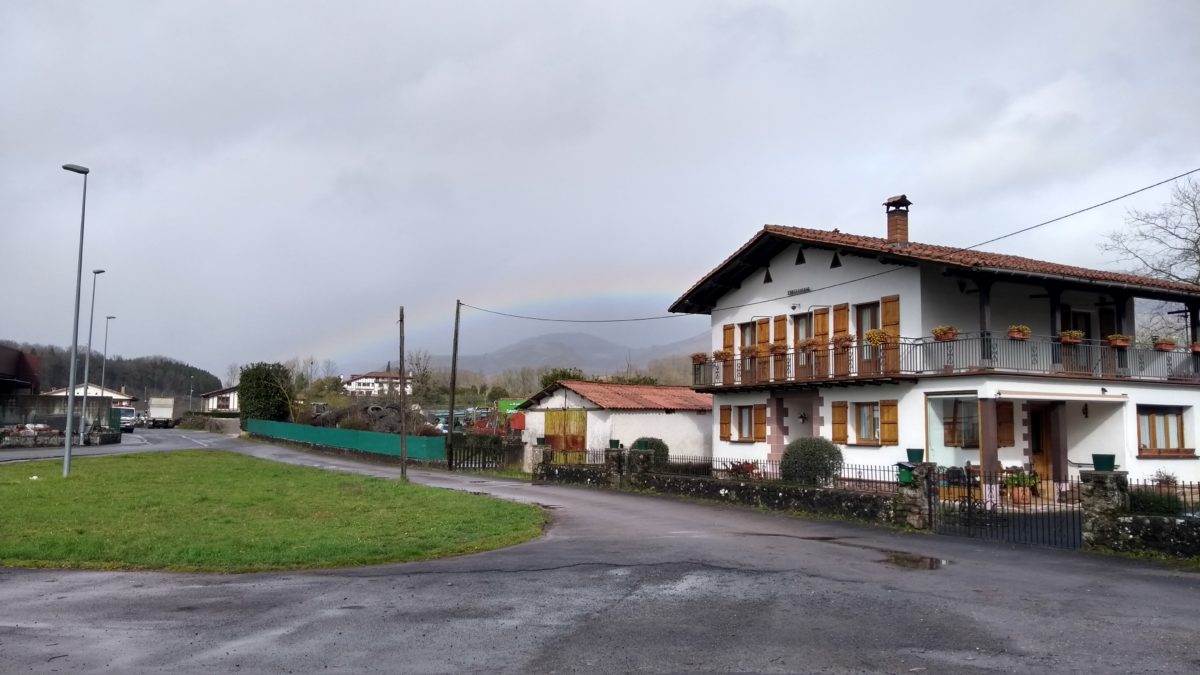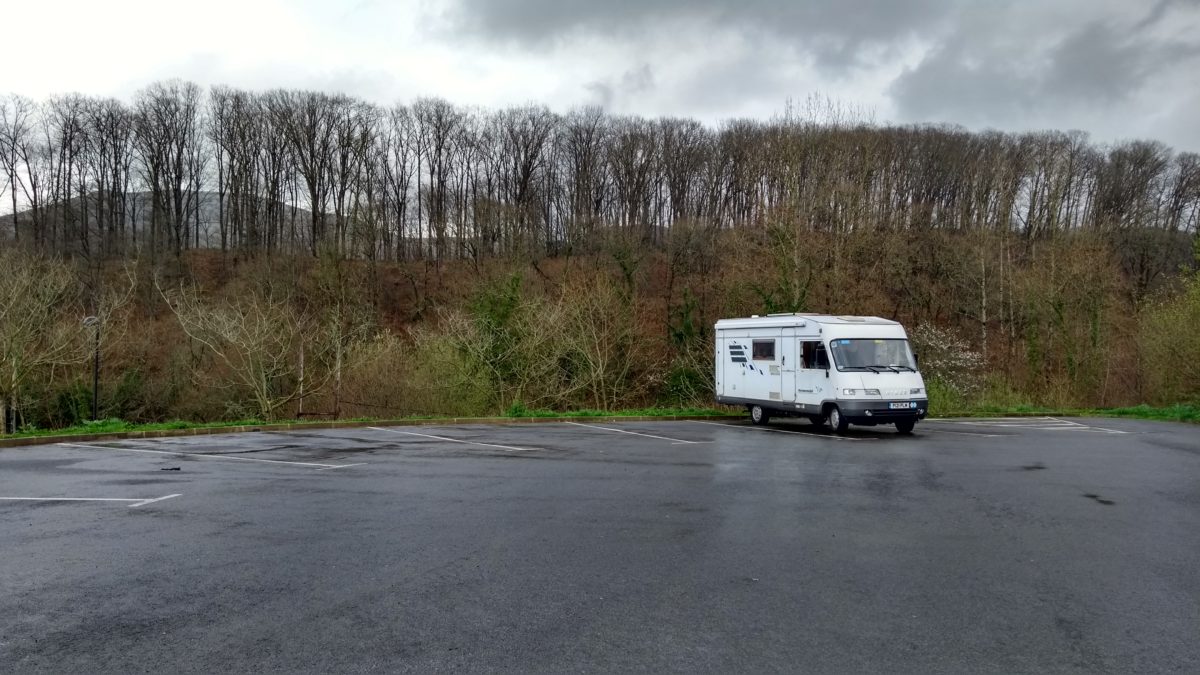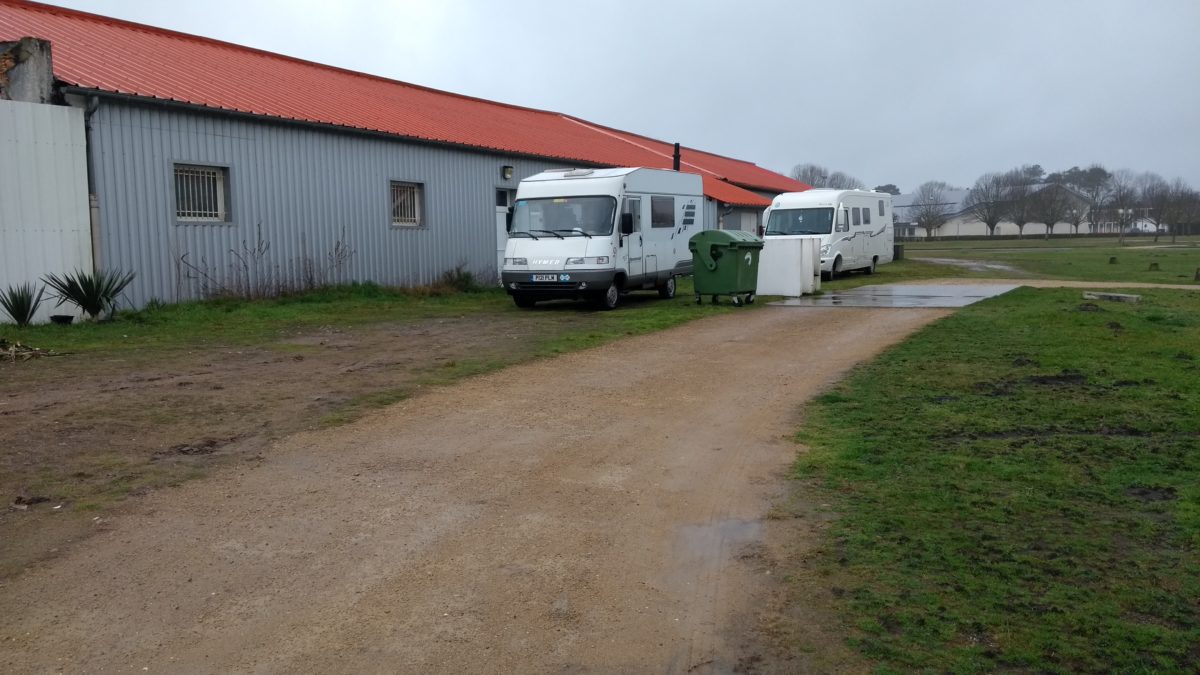Some of the best village ramparts in France
We are now in full travelling mode. The pressure is on to get home fairly quickly. The Covid-19 crisis is growing fast and more and more cases are appearing in Europe. There is a cluster of cases in Northern Italy and a number of towns in Lombardy have been locked down with no-one allowed to leave. My nightmare is that we could inadvertently be caught in such a lockdown if a cluster of cases is found in an area of France we are passing through. All plans for sight seeing have been abandoned and we are doing around 120 miles a day (we normally aim to travel about 60 miles per day) and plan to be on Eurotunnel on Thursday 5th March. We have not booked the crossing yet but will do is in a couple of days if it seems likely that we will make that date OK.
Sitting on a wet and windy aire in the middle of the Landes area of SW France it is hard to cast my mind back to the warmth and sunshine of Rioja and Navarre! That all seems so long ago and it was only three days.
We filled with water at the services and left Cassalarreina on Tuesday 25th February in bright sunshine and drove through the little town. The landscape has changed quite a bit. Gone is the open flat plain and we were in much more hilly country peppered with little medieval villages clinging to the hillsides or crowning hilltops. All had large churches and some had castles too. There were vast areas of vines (this is Rioja after all) and a few olives and a sprinkling of almond trees too.
Our coffee stop was at a picnic site beside the River Ebro that we last saw on 23rd November 2019 as we left the Ebro Delta in a completely different part of Spain – it is a huge river. It was a bit of a detour along a very narrow road through the vines that had road signs saying that agricultural vehicles had priority! We also had to cross the Ebro which took us in to Euskadi (Basque region) and all the road signs were in both Euskadi and Spanish. The Basque language is the oldest spoken language in Europe and is unrelated to any other language and looks very strange to our latinised eyes! Later we were to find that they speak Euskadi in Navarre too – not just in the Basque country.
After leaving the Ebro (now back in Rioja) we followed the motorway through Logrono heading north and west in to Navarre. The plan for lunch was to go up to the Embalse de Alloz where Park4Night suggested there was a nice flat car park right by the dam with super views. What P4N did not make clear was that this car park was accessed along a very steep, narrow and rough track which I declined to even attempt. It would have been a great spot and the climb up through the hairpin bends was quite dramatic! We found a more suitable spot by a monastery just below the lower dam and spent half an hour watching eagles and later also some vultures circing high above us!
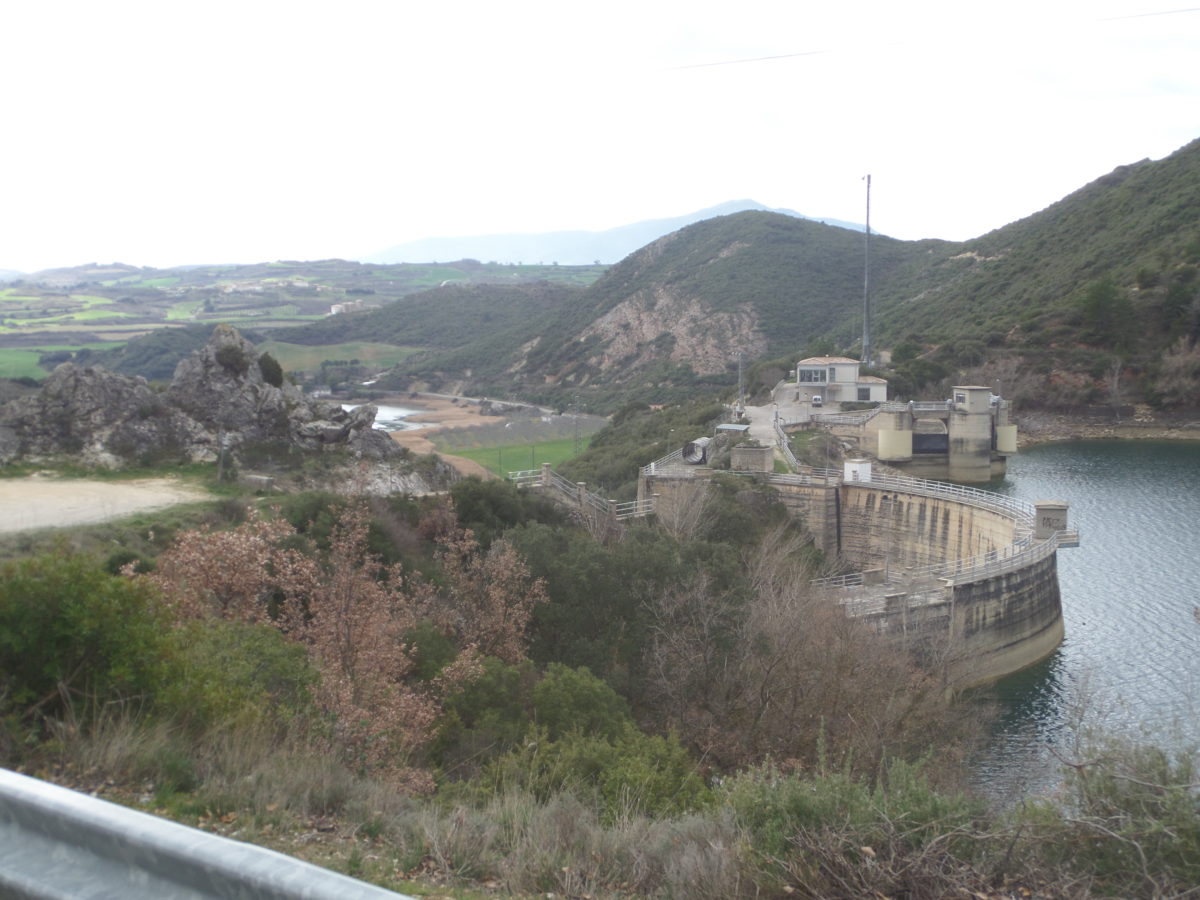
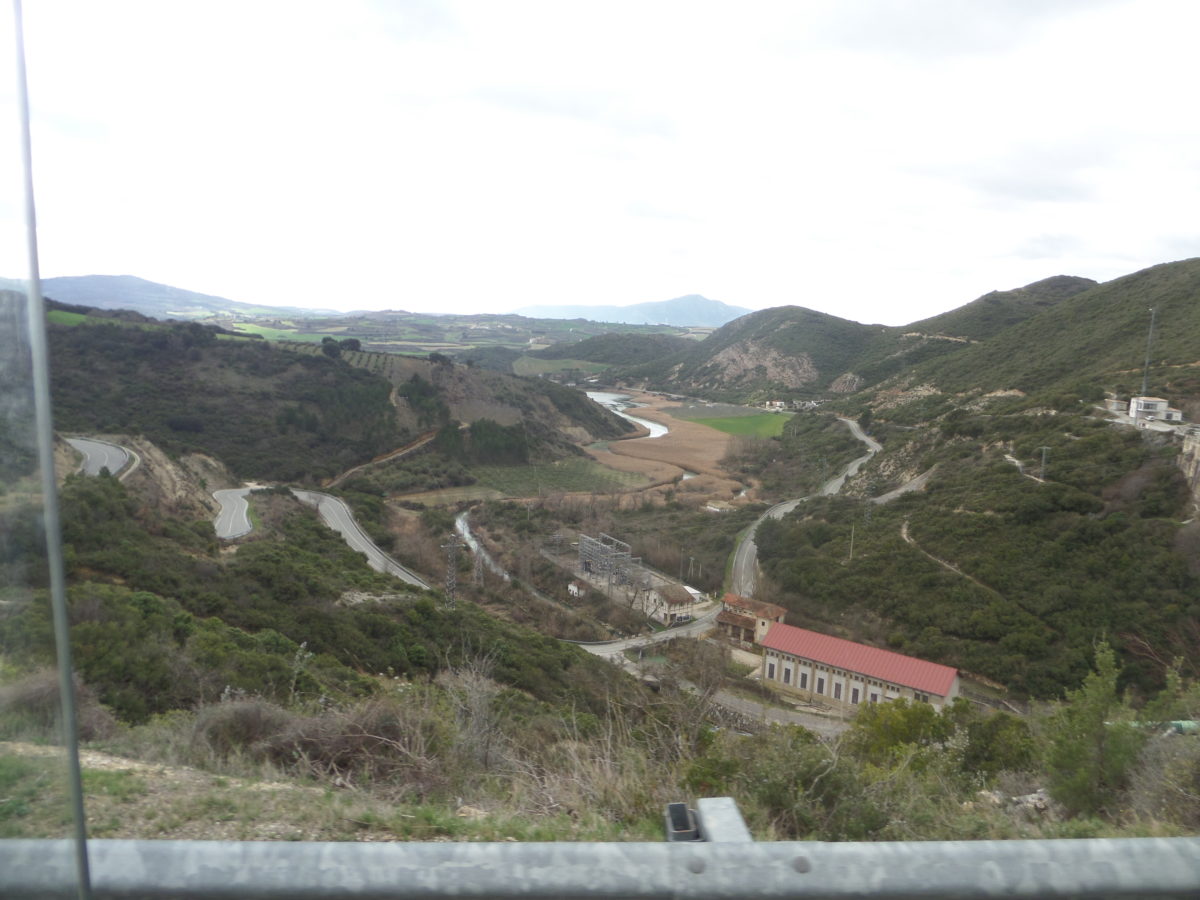
We had plenty of time to get to Pamplona and opted for the old main road rather than the motorway and enjoyed the views at a more sedate pace. However the storm clouds were gathering and we knew that the weather was not going to hold for long – in fact there was a superb rainbow ahead at one point. It started raining as drove through Pamplona to our aire in a large car park in a suburb on the north side of the city.
The original plan was to have two nights here getting jobs done – laundry, shopping, LPG and cheap diesel fill up. In fact we decided to get all this done on Wednesday morning and make a start on the drive north in the afternoon. We got our jobs done quickly and we had washed and dried a load of laundry at a nearby Repsol garage and then filled up with amazingly cheap diesel (€1.108/litre) at a Repostar garage. We had planned to shop at Mercadona but decided as they limited access to their car park with height barriers that we would take our business somewhere that it was appreciated! There is a Dia Max supermarket very close by and we stocked up with goodies for the journey home.
We were heading into the hills shortly after midday which was really good going. The scenery changed immediately and the houses looked almost alpine with large eaves and balconies with flowers etc. I had slightly misjudged the route and the first part was very busy with heavy freight and all in a hurry! However we managed to leave much of this behind when we turned off on the back route through Elizondo.
Our lunch stop was at Ordoki – an aire in Park4Night which I had identified as having services (we did not bother in Pamplona as it was raining!) and was a possible night stop too. The aire was tiny and the services basic – the fresh water point was too close to the loo emptying point so I did not fill with water. Had we needed water I could have used a Dettol wipe to disinfect the water point but we had 3/4 of tank so no need as long as there is water tonight or tomorrow.
Lovely little spopt by a river with with an old, narrow bridge over the rushing river Baztan. We had a little walk and explore but the rain never stopped for long and we were not keen to leave Bertie’s shelter for long!
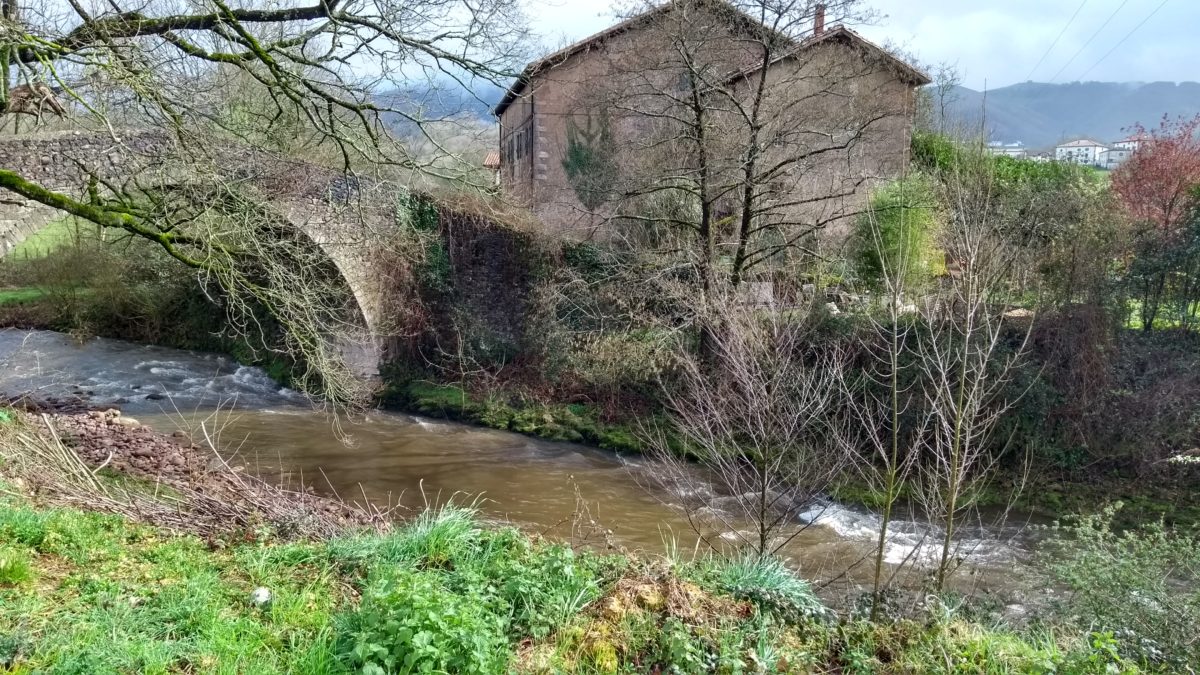
After lunch we pushed on for a few more miles to Dantxariena (I have no idea how to pronounce that!) on the French border. This took us over the Otsondo pass (605m) which was quite a climb up and a stunning drop down the other side. Bertie did the whole thing (up and down) in second gear at little more than 20mph. Very little other traffic around fortunately! Bertie is happiest in the mountains at these low gears and low speeds – not least because he does not go around sharp bends very quickly and his brakes get very hot if you use them too much coming downhill.
Dantxarinea was quite a surprise – it was one big “retail opportunity” a collection of designer stores and supermarkets and restaurants. Cleary catering for the cross border trade from France where most prices are higher. It also has the advantage of being a Spanish town that is north of the Pyrenees i.e. you can get there from France with out crossing the mountains. The aire was flat, quiet and tarmaced but no water which was a shame. Still we slept OK and Thursday morning we emptied the loo and the grey tank. We reviewed our stocks of Spanish goodies and decided there was scope for a few more so we walked across the road to one of the supermarkets and cruised the aisles looking at cheeses, olives and honey.
One our way out of town we filled up Bertie’s LPG tank too as LPG is slightly cheaper in Spain and we reckon that fill up should see us back to UK where LPG is much cheaper.
Less than 200 metres down the road, and still in the town, we crossed the border in to France. There was even the old customs post with “Douane Francais” in large letters but empty and unmanned these days.
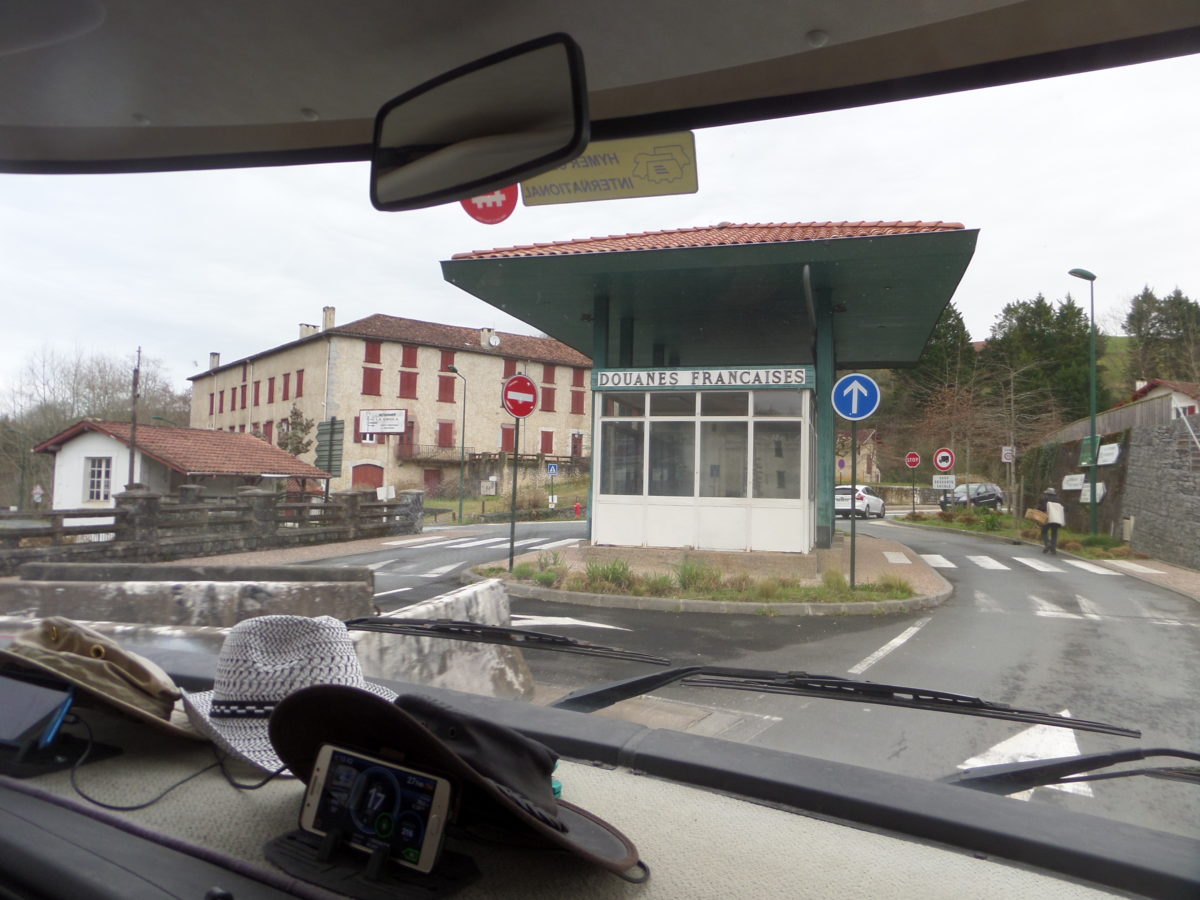
Our route today took us through Le Pays Basque region of France – we did not realise that this part of France just across the border was also Basque and the road signs were now in French and Basque instead of Spanish and Basque. Very pretty little villages with more alpine looking houses in the small villages. Lots of sheep in the fields and relatively few cows – in Austria or Switzerland it would be the other way around.
Our coffee stop was in Bardos on the municipal aire. We managed to fill up with water here and only just in time before the rain and wind started in earnest. We sat on Bertie watching the big wheeled rubbish bins being blown across the car park! They missed us but did hit a couple of other vehicles.
Lunch stop was on another aire in the large town of Dax by the river Ardour. Still wet and windy so declined to get off Bertie and take photos!
Our last lap today was across the Landes – this region of South West France between Bordeaux and Bayonne is very flat and with such poor soil that they grow little here but pine trees. We drove 30 miles from Dax to Morcenx and almost all of that journey was through pine plantations.
Tonight we are on a scruffy municipal aire between the sports centre and the railway line! If it was dry we might explore the little town but it is still cold wet and very windy. So windy that we are parked up hard against a wall to shelter us from the worst of the weather. It is supposed to clear up tomorrow and we will fill up with water again. I am not sure how often we will be able to get water as we go north as they tend to turn off the water in the aires in Northern France between November and March against possible frost damage















